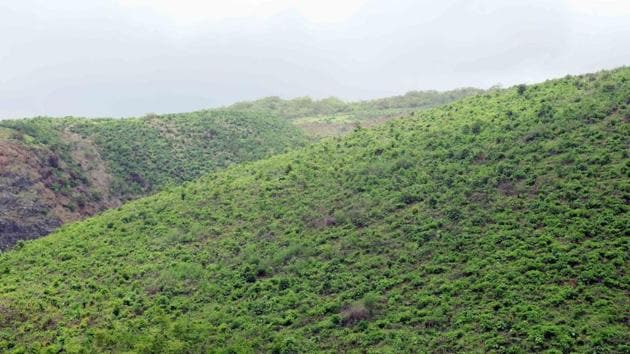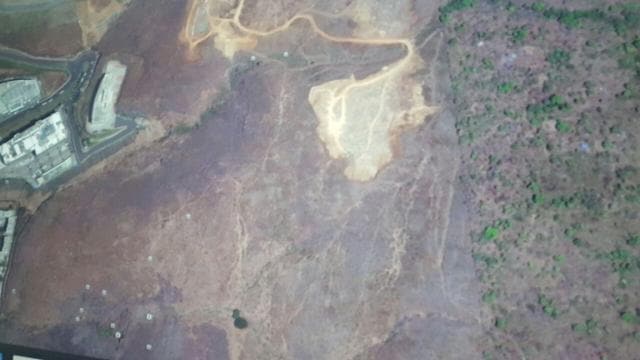In Mumbai: SGNP buffer zone under threat from construction activity
A comparison of satellite images from 2000 and 2016-17 show how soil and rocks have been mined from the hills that fall under the forest cover of SGNP, cutting into them, which has also resulted in widespread destruction of tree cover.
Private builders are ravaging the Dindoshi hills that form part of the buffer zone of the Sanjay Gandhi National Park (SGNP) flouting all environmental norms, say green activists. They say a comparison of satellite images from 2000 and 2016-17 clearly show how soil and rocks have been mined from these hills, cutting into them, which has also resulted in widespread destruction of tree cover.


The Mumbai-based non-governmental organisation (NGO) Watchdog Foundation alleged private builders in Goregaon (East) were behind these depredations that were in violation of the December 5, 2016, notification by the Union Environment Ministry that prohibits commercial mining and stone quarrying around the SGNP.
The NGO filed complaints with the Mumbai suburban collector and SGNP officials on Saturday. “The notification by the environment ministry says stone quarrying and crushing units are prohibited except for the domestic needs of local residents when it comes to construction or repair works only. Such activity is not permitted for development of real-estate,” said Godfrey Pimenta, trustee, Watchdog Foundation.
Officials from the Mumbai suburban collectors’ office said that an independent investigation would be done in the matter. “We have not received the complaint yet but I will ask my sub-divisional officer to visit the site, carry out a cross-examination of the complaint and file a report. We will take action against private builders if there is a violation that has gone unnoticed,” said Deependra Singh Kushwa, Mumbai suburban collector.
Forest department officials said a survey had been planned to check such violations in the area. “The local divisional forest officer has been informed about such activities in Mumbai and surrounding areas. A survey will be conducted to check the destruction of forest. If we find any wrong done at the site, immediate action will be taken,” said a senior official from the Thane forest range.
The SGNP is home to more than 1000 plant species, 251 species of birds, 50,000 species of insects and 40 species of mammals. In addition, the park provides shelter to 38 species of reptiles, nine species of amphibians, 150 species of butterflies and a large variety of fish.
“Some of the animal and bird species are becoming increasingly uncommon around the SGNP due to the urbanisation in the surrounding areas like this cutting into of the hills,” said Pimenta. “The ecology of this entire area is on the verge of deterioration as a result of this rapid urbanisation.”
Environmentalists also said that trees and water bodies were the worst-hit by this illegal quarrying and mining. Stalin Dayanand, director, Vanashakti, says, “There was a waterfall that used to run through the hills, which have dried up due to illegal constructions within the hills, hidden from the public and these activities are conducted only at night.”
An order passed by the National Green Tribunal, western bench in 2015 said that hills with a slope of 25 degrees or more cannot be permitted to be cut into. “Several Bombay High Court orders and the Wildlife Protection Act, 1972, do not allow quarrying or cutting into the hills in and around the national park,” said Stalin.
Why should you care?
· If a hill is being demolished within two separate hills, continuity of the range is lost, which means it impacts the ground water, percolation, tree cover and natural biodiversity
· Unregulated quarrying leads to high siltation in creek areas. Construction debris landing up at creeks squeezes them from the edges
· There is noise pollution due to the rock cutting and heavy dust is generated while drilling.
· Excavators and heavy machinery can cause serious disturbance to the wildlife
READ MORE
Open wells are a hazard for wildlife: 1,500 animals died in the last 10 years



